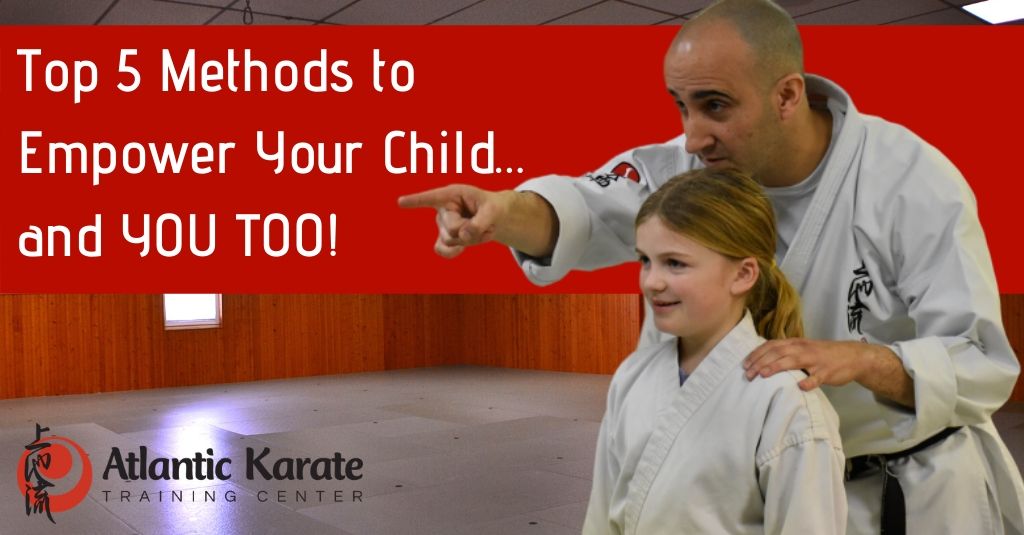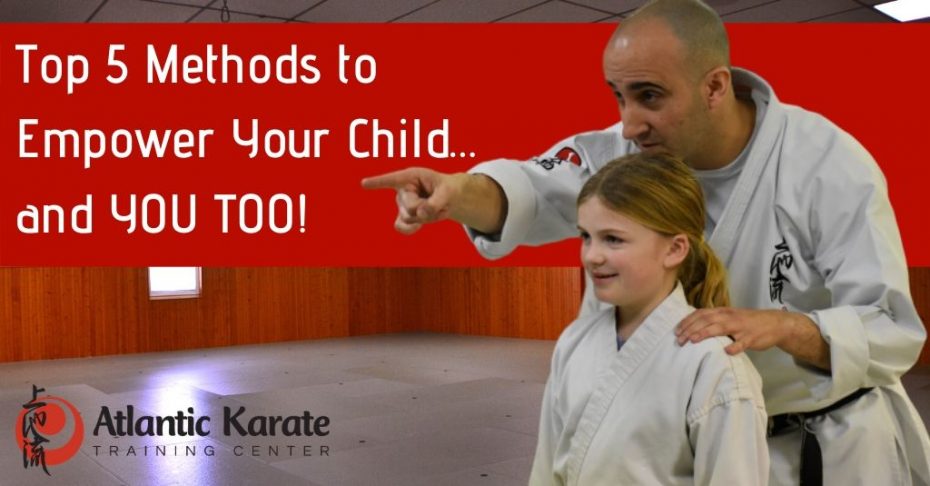
Empowering our children is every parent's goal. We want to help them develop genuine confidence, internal strength and ability to handle obstacles. Allow them to stand on our shoulders and give them a path to self empowerment. After 20 years of teaching and hours of research on how to best empower and motivate children (and adults too), we have compiled our best methods for students of all ages.
When your child is faced with a problem or a difficult situation how do they approach it? Do they collect information and determine the best course of action? Or do they determine the challenge is too difficult and make a decision not to proceed out of fear of failure?
Current research, spearheaded by Dr. Carol Dweck, indicates that there are two different mindsets, Growth and Fixed, as it pertains to problem-solving, learning and success. With a Fixed Mindset, a person believes their ability, intelligence and talent are fixed traits and can not be developed nor expanded upon. A person of a fixed mindset often avoids challenges because they fear not being successful, perfect or good enough.
With a Growth Mindset, a person believes intelligence, talent, and knowledge can be developed through learning, effort, motivation and perseverance. A growth mindset embraces a challenge and sees that challenge as an opportunity to expand their knowledge. There is no failure if you can learn something from that setback or difficult task.
Check out this infographic to learn more about the difference between Growth and Fixed Mindsets and how they affect many areas of one's life. (You can even download it here)
There are several approaches to how to transition a fixed mindset to a growth mindset. Many focus on small attitude enhancements as to how one responds to a difficult task or failure. Small changes over time are extremely effective and can be implemented relatively easily.
Steering kids (and yes yourself too) towards exploring a challenge versus shying away from it can be accomplished with a few changes in how you respond.
Method One: Praise the Effort Over the Result
Getting a good grade on a test is the result and can be rewarded, but the effort it took to study and do the extra work to accomplish that good grade is where the praise should be focused.
Your child comes home and shows you his math test. The grade reads 87%. He looks at you and says “it’s not an A!!”
You know how much he studied and prepared for this exam. Let him know the effort is more important than the grade.
Praising the effort:
“You put in a lot of extra time studying and preparing for this, I’m proud of all your hard work.”
“That was a difficult test and you did well because you worked hard and prepared for the exam.”
Method Two: Change Their Attitude About Failure
Failure is not a negative, it is a learning opportunity. Failure can be seen as growth with the right attitude. In the famous story of Thomas Edison and his team of 30 scientists, they looked at the 10,000 attempts to make the light bulb as not failures, but 9,999 ways not to make the light bulb. Now that’s a power paradigm shift!!
Your child misses the wide-open goal at their soccer match and they are beating themselves up over their "failure." Afterward, you hear them say “I stink at soccer.”
Your response can change your child’s perception of their failure.
“Hey kiddo, great effort. Let’s go to the park tomorrow so we can practice that shot. Some extra practice can help improve your aim and your comfort with that short because I know you have it in you with some more work and I’d like to help.”
Method Three: Rewire Their Self-talk
How a child sees themselves dictates their attitude, confidence and ability to learn.
Your child is frustrated with putting a puzzle together. You sense their frustration and hear them say “I can’t do this.” Or “I don’t know how to do this.”
Add the word yet to their statement “I don’t know how to do this yet.” Continue adding the yet whenever you hear negative self-talk. Eventually, they will change their inner dialogue and know they can accomplish a difficult task with some extra effort and practice.
Also, your self-talk that they see/hear has a profound impact on how they will speak to themselves. You burn the toast while making breakfast….. “oh stupid me I burnt the toast again.” Rephrase: “I burnt the toast and now I’m going to make another one.” Much of our child’s, student’s and athlete’s behavior is learned by watching who they emulate. So give them the best example of who they can become.
Method Four: Show Them That You Don’t Always Have to be Successful
Allow your child to see your failures and moments of imperfection. How you embrace a difficult moment or a complete failure influences how they will respond to their own struggles.
Ever burn the grilled cheese or been off $.20 when balancing your checking account? These are great mindset teaching moments.
Talk to your child about how next time you will lower the temperature of the pan so you don’t burn the grilled cheese. You can be light-hearted and say that while you have made hundreds of grilled cheese sandwiches, there is always an opportunity to learn something new.
Show them your resolve and problem-solving skills by looking for the $.20 in your account. Talk to them about your process, matching deposits, checks written and going line by line to find the error. Your effort will influence their effort.
Method Five: Acknowledge Their Persistence
Any time you see them persevering and putting in their full effort to solve a problem or work out how to accomplish something with which they preciously struggled, acknowledge them.
It doesn’t mean you have to overly praise them, but it will mean a great deal to them that you noticed their effort.
You watch your child put in an extra 30 minutes on their homework. It is multiplication tables and you know the 8’s are a tough table to master for many kids.
“You are really working hard on that math homework by putting in that extra time. Great job… I am proud of you!”
There is no quick fix for changing your child’s mindset. Time and consistency will help your child see the challenge as an opportunity and not as a road block. There is also no age limit on changing your mindset from fixed to growth. Children and adults (Yes You!!!) alike can learn how to respond differently to any challenge.
First, learn your fixed mindset triggers (what situations does your fixed mindset become an issue) and recognize your fixed mindset inner voice (what do you say to yourself that sabotages or prevents you from putting forth the effort?). Secondly, ask yourself questions that will activate your growth mindset such as: “What can I learn from this?” or “What steps can I take to help me succeed?”
Now go coach your child (and yourself) to develop that growth mindset to its full potential.
If you would like to learn more about Dr. Carol Dweck’s philosophy, her Ted Talk about Mindset is one I turn to often for inspiration. Dr. Dweck Ted Talk
About the author: Andrew E. Moores is the Director of Training for Atlantic Karate Training Center in beautiful North Hampton, NH. He has the most blessed opportunity to teach amazing students ages 4 to 77 years old for the past 20 years. He has had the privilege to witness students of every age chase after and reach their full potential.




